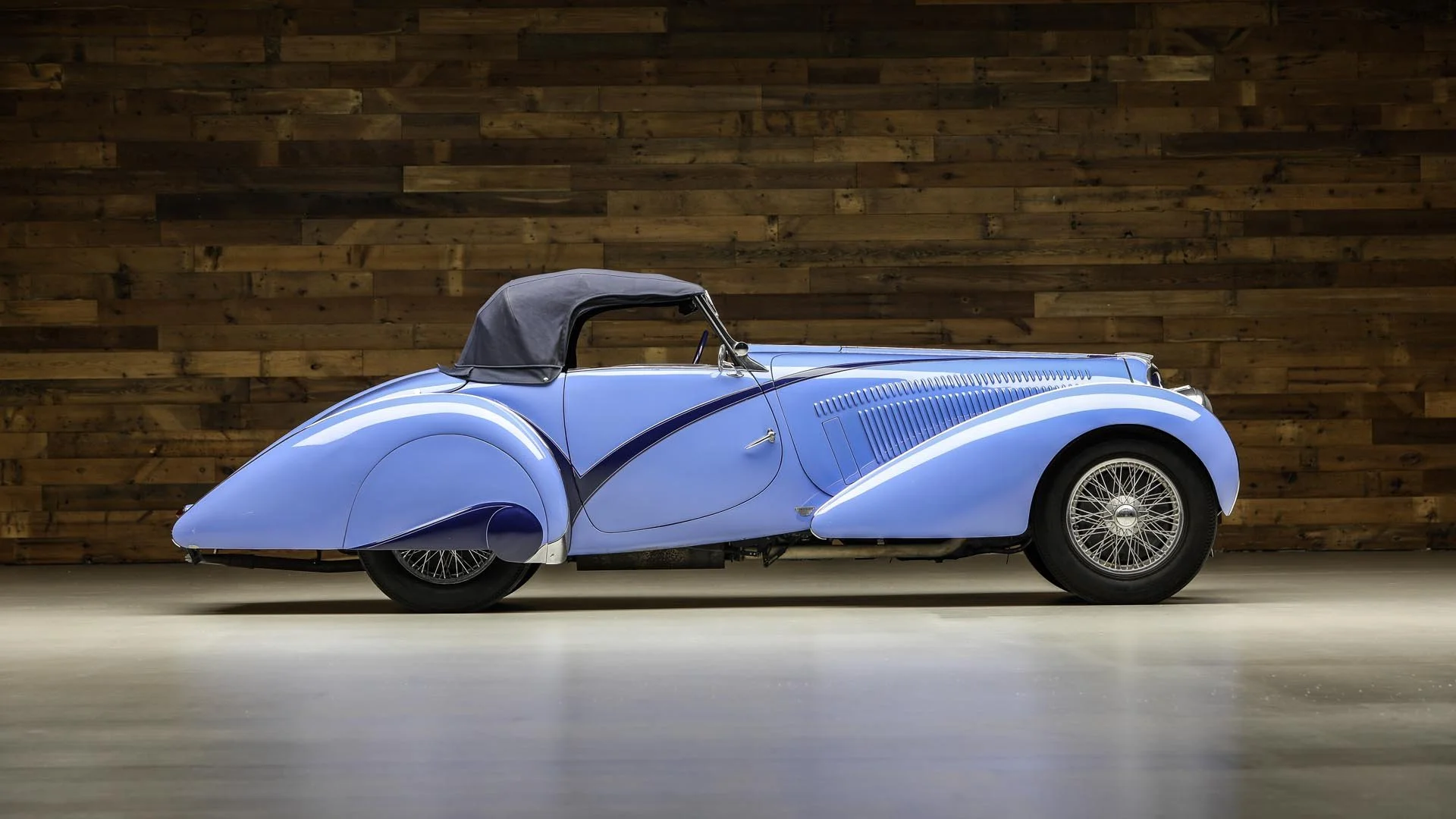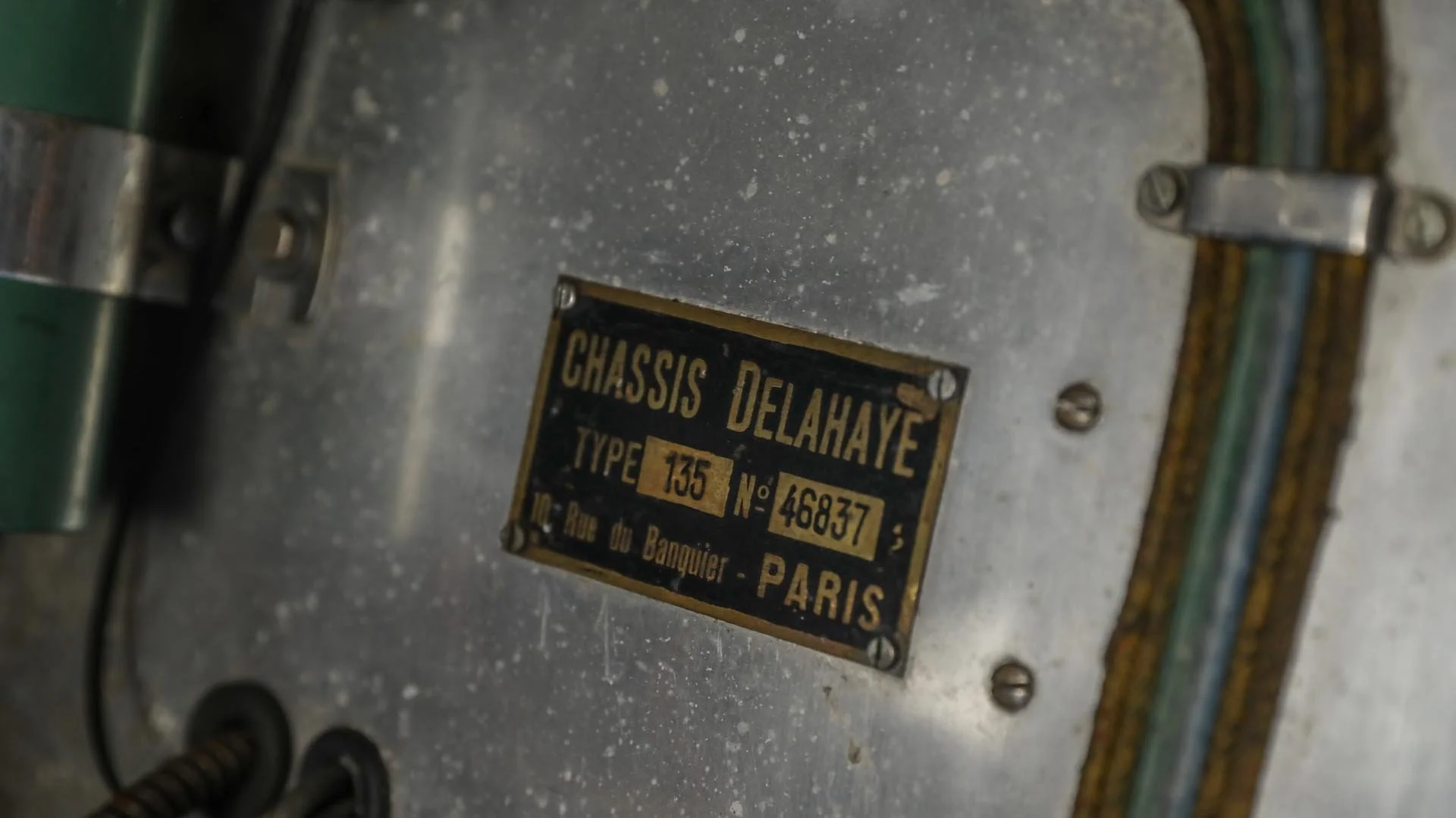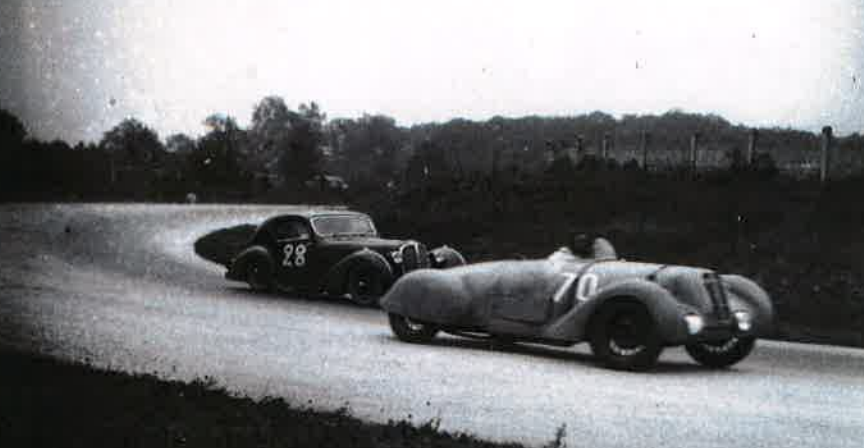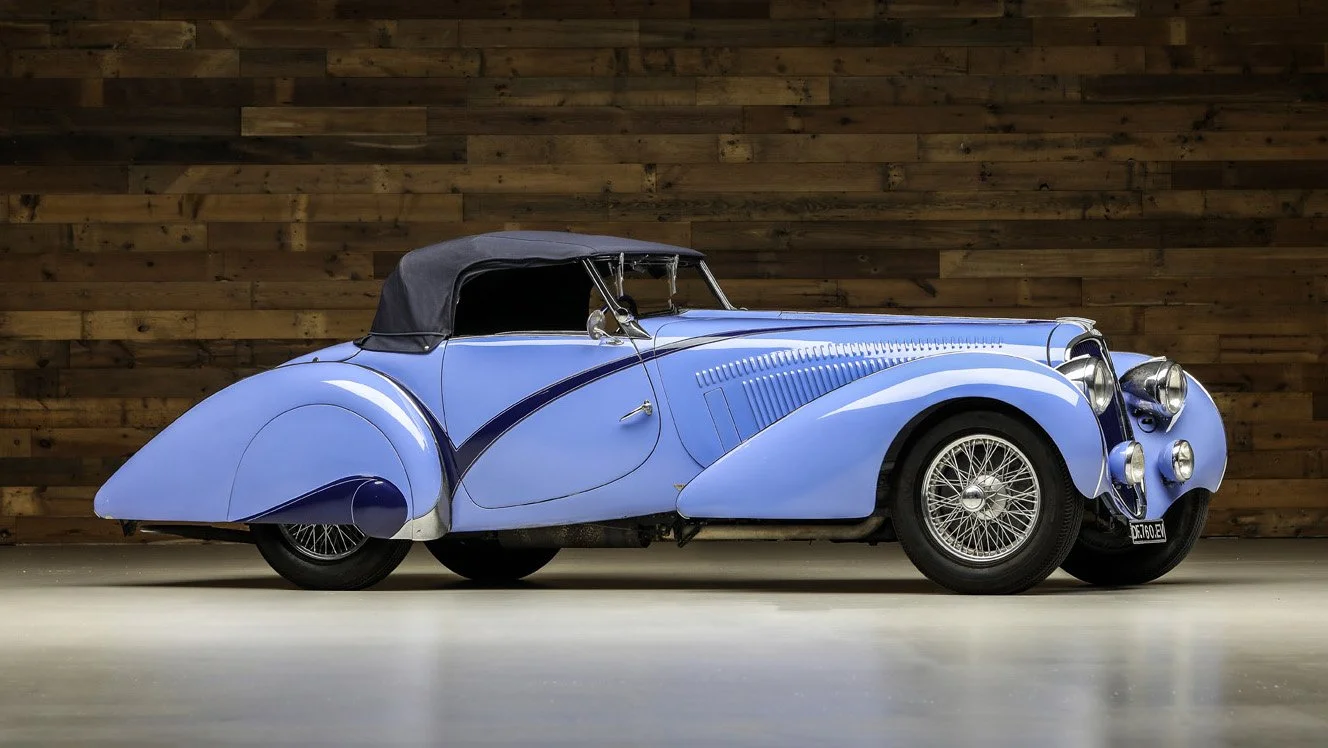1936 Delahaye 135M Competition Court Cabriolet
Coachwork by Figoni et Falaschi
Chassis #: 46837
Body #: 572
This extraordinary 1936 Delahaye 135 Competition Court is one of only six coupes bodied by the legendary French coachbuilder Figoni et Falaschi that year. Built on the ultra-rare 2.7-meter short-wheelbase chassis, designed to satisfy homologation requirements for racing, these examples were the pinnacle of French automotive design and performance of the era. Of the six produced, this particular car is unique — the only one originally configured as a "faux cabriolet" with an uncommon three-seat arrangement (two front seats and a single rear seat), as documented in the Figoni register.
Delivered new in February 1936 to a Frenchman named Mr. Bibal, the car was quickly acquired by Jean Tremoulet, a celebrated Delahaye works driver. Tremoulet entered the car in competition, racing it in the 1936 Grand Prix of Independent and the Autumn Cup at the famed Montlhéry circuit, where it wore number 28. Notably, it was the only coupe-bodied car in a field dominated by open Le Mans-type racers, a testament to its distinctiveness and daring design.
In 1938, the car was sold to Dr. Jean-Marie Lefevre, a country doctor from France's Ardennes region. Dr. Lefevre was known for driving the car at high speeds during house calls and participating in local rallies. When World War II erupted, the car was hidden under hay bales to prevent confiscation by Nazi forces. Remarkably, when retrieved in 1945 after five years of concealment, the Delahaye started right up — a testament to its engineering integrity.
History and Significance
By 1946, the car changed hands to André Bith, a wealthy French enthusiast and racer. Bith campaigned the Delahaye at Montlhéry in April 1948, where it bore the number “2.” To enhance its competitiveness, he upgraded the car with a 3.8-liter engine (still fitted today) and De Ram shock absorbers. In May of that year, he commissioned a conversion from coupe to cabriolet by a coachbuilder in Levallois — a transformation inspired by his girlfriend’s preference, but one that preserved the essence of the original Figoni design.
During Bith's travels to South America (1949–1957), the car was carefully stored in a heated outbuilding on the grounds of the Chaumont family château. In 1959, the Delahaye was re-registered with the plate 5874 JJ 75 and soon passed through several prominent collectors. Among them was Baron Henri de-Robert Nègre du Clat, a notable Delahaye connoisseur in Paris, who owned it from 1960 to 1966. It was then sold to Monsieur Landis, an engineer who initiated mechanical restoration work with renowned coachbuilder Henri Chapron and began a full restoration, completing the chassis while the rest remained disassembled.
In 1985, the car was acquired by Roger Tainguy, a famed Delahaye expert and historian, who undertook extensive research to track down its historical documentation and original ownership records. Tainguy commissioned a complete restoration from Jean-Luc Bonnefoy, then a rising talent who would later become one of the most respected Delahaye restorers. This meticulous restoration honored the car’s authentic configuration, utilizing original components including the doors and rear body section.
The restored car was sold in 1992 to French collector Hervé Ogliastro, who campaigned it in various rallies and displayed it at the Centre International de l’Automobile de Pantin. In 1994, the Delahaye returned to Montlhéry for celebratory laps — a poignant homage to its racing past. The car was meticulously maintained and stored in a climate-controlled garage, preserving its exceptional condition.
In 2017, it joined a prestigious private collection before being acquired by noted collector Tom Maoli in 2023. The car is currently undergoing a fresh restoration at Nostalgia Motors in Boonton, New Jersey, where it is being carefully prepared to once again reflect the beauty, performance, and historical significance that define the Delahaye 135 Competition Court.
Design Differences
Originally constructed as a faux cabriolet coupe, later transformed into a true cabriolet while retaining the signature Figoni lines
Long, flowing teardrop-style bodywork — hallmark of Figoni et Falaschi design
Voluptuous fenders, sloping tail, and aerodynamic integration of body elements
Cabriolet conversion conducted in 1948, respectful to the original style and proportions
Painted black at the time of its transformation
Restoration by Jean-Luc Bonnefoy remains remarkably well preserved
Elegant proportions matched with high-performance underpinnings — a rare pairing of grace and motorsport pedigree
Exterior
Interior
Originally configured with three seats: two in front, one across in the rear
Interior restored in period-correct fashion during the Bonnefoy restoration
Minimalist racing-era cockpit with refined French detailing
Preserves the elegance of 1930s coachbuilt interiors with practical layout suitable for both touring and sporting use
Originally fitted with 3.5-liter inline-6 “Compétition” engine
Upgraded in 1948 by André Bith to a 3.8-liter Delahaye engine, still installed today
Fitted with De Ram shock absorbers to improve handling and competitiveness
Engine tuned for circuit driving — the car’s racing credentials include Montlhéry competition
Strong, reliable mechanicals combined with short-wheelbase agility
Eligible for premier concours, historic racing events, and international vintage rallies
Engine/Performance
Gallery










